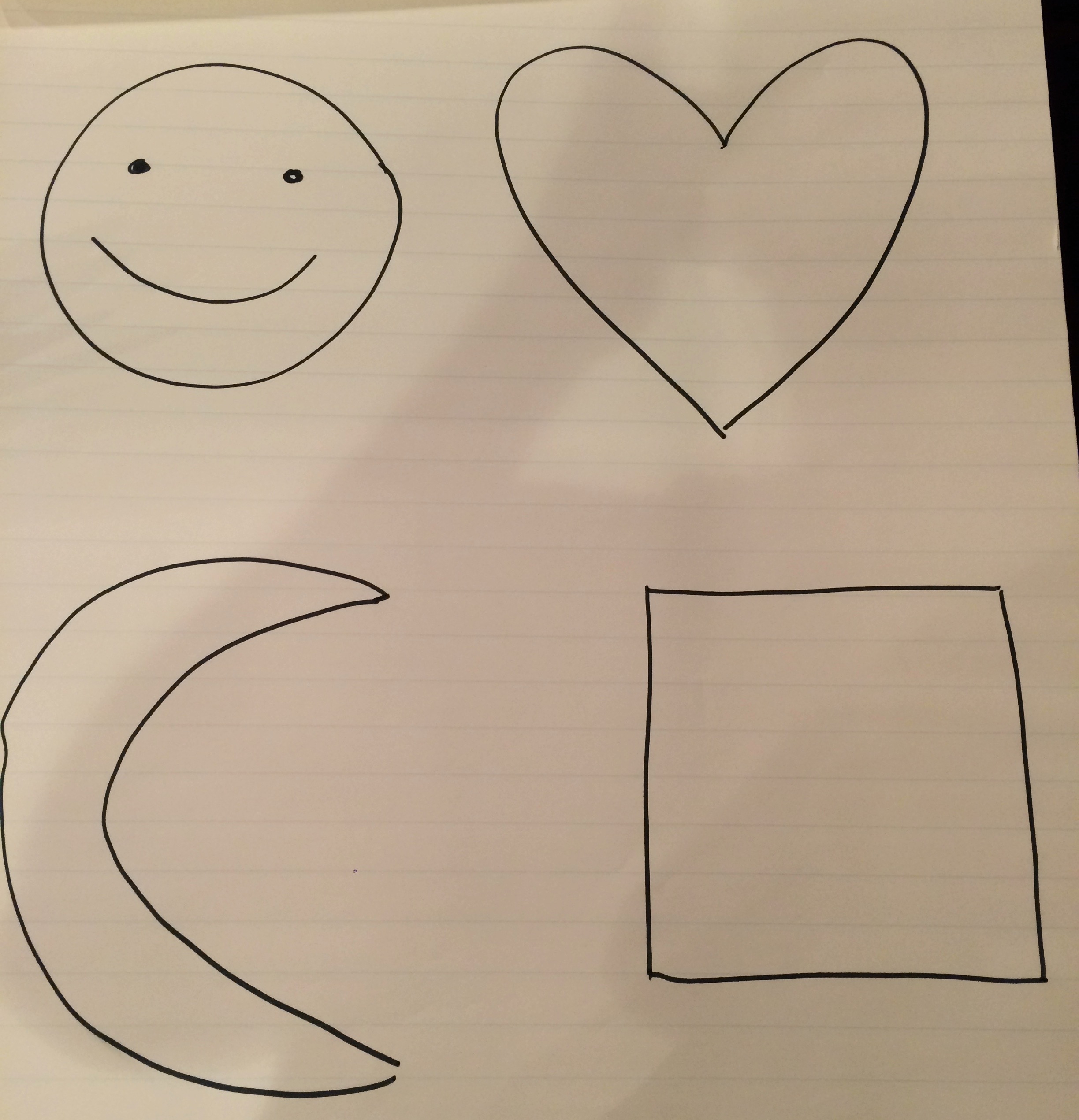Tomorrow afternoon at my local library I am running an hourlong math exploration for kids age 4-7. I've decided to focus the event around the idea of symmetry. This is what I'm planning to do.
First, I am going to start the session with a book or two. Laura, the librarian who has been helping me, has pulled a few books about symmetry, mirrors, and other things. I haven't chosen the books yet, mostly because I haven't been able to make it to the library yet. I hope to get there tomorrow morning so I can read through them all and choose a couple to use.
Once I've read a couple of books, I will introduce the theme of symmetry and discuss what it is. I have no idea how well kids this age understand symmetry, but I am really looking forward to the discussion of this set of four images. My theory is that kids will have a much easier time seeing the symmetry in the top two images because the line of symmetry is vertical. The crescent moon has symmetry as well, but not in the way that people most naturally see symmetry (I think). Also, I am genuinely curious whether any kids will see the diagonal lines of symmetry within the square. But given the fact that these were all drawn by me and I have the artistic ability of a 4-7 year old, maybe not...
In any case, after this we will move to some folding and cutting. I have lots of construction paper and scissors, and at first I am going to get kids to fold their papers and cut them along the folded side in any way that they want. I just want to see what kids can come up with when they get a chance to fold and cut paper. But because I am a bit nervous about my mixed-age environment, I've come up with some challenges that the older kids can try if they'd like. My favorite part about these challenges is that they are equally fun for adults to try to do. I recommend you try some on your own. Cutting out a triangle from a folded piece of paper is harder than you think!
Once we've sat for story time and cutting and folding, it's time to move some more! I'm going to have kids run around the room and then stop and find a partner. They will act as mirrors for each other. I played this game in play practice in high school, but I think younger kids will enjoy it even more. It's fun to be the lead, and it's even more fun to be the mirror.
After they've done that, I'm going to lead kids in some mirror drawing. This is an activity inspired by my son, who spent some time at a birthday party drawing symmetrical designs by grabbing two pieces of chalk and moving his hands inward and outward in symmetrical patterns with each other. The idea is to try to imagine a line of symmetry running down the middle of the page. Each hand mirrors the other.
I have no idea how this will go, but I'm excited to see! I imagine a lot of frantic waving of markers, but I am really curious what kids do when they actually try to draw an image. To that end, I made up some challenges for this activity as well. As with the last challenges, they are equally fun for adults and kids. Seriously, try to write your name with your bad hand and then mirror it with your good hand. It's great.
Once we finish this section, we are on to the best part: free play! During this time I will have a bunch of stations, all inspired by Christopher Danielson and Math on a Stick. We'll have eggs and cartons, a pattern machine, 21st Century Pattern Blocks, tiling turtles and tiling pentagons. During this section, the only recommendation I have to kids is "If you want, make something symmetrical and show me."
To add to the fun, I have a bunch of hinged mirrors that I will give to each station. I have become somewhat obsessed with mirrors in the past year, and I love seeing all the fun things that people can come up with when given a reflective surface. After free play, we are done!
Something I made with pattern blocks and mirrors.
Things I am Unsure Of
Honestly, almost everything! I have never facilitated a group of kids this age before. I don't have the basic management skills that a 1st grade teacher has, and I don't know how to thread the needle between allowing creative play and providing structure for kids to thrive within.
I really hope that the kids that come can meaningfully interact with all these different activities, that I haven't chosen tasks that require fine motor skills that young kids don't have. I am happy to have my backup plan of Danielson-approved free time in case my planned stuff crashes and burns in 20 minutes.
Also, I feel like I am going to be trying to have two conversations at once. The main conversation will be with the kids, interacting with their math ideas, but I will also want to talk to the parents about how to interact with their kids while they are playing with math. I have a cheeky list of rules I came up with, but I am torn as to whether to post them. Are they lighthearted or obnoxious? Or both? I don't know.
To mitigate this tension, I am going to collect parent emails and send out a follow-up email, where I give parents tips on extending each of these activities and also direct their attention to some good ideas for talking math with their kids. I'll post again soon with a debrief of this event, as well as the text of my email to parents.




